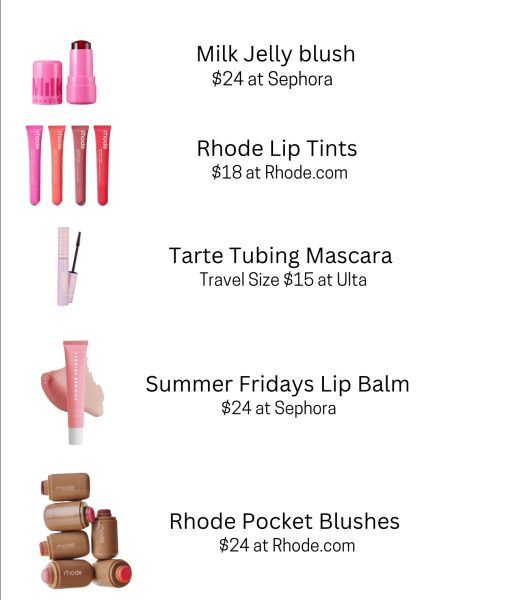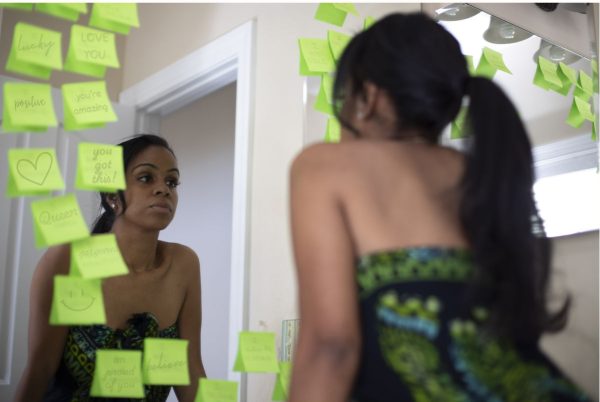‘Don’t Worry Darling’ stirs up drama, disappoints viewers
Florence Pugh as Alice and Harry Styles as Jack in new movie “Don’t Worry Darling” (Courtesy of Warner Bros.)
The warm, sunny, and picturesque town of Victory featured in hot topic release “Don’t Worry Darling” is an idyllic facade of the 1950s. The bright colors, manicured lawns and bold red lipstick on all the women in the fictional Victory make for a seemingly perfect existence that the movie quickly reveals to be a lie.
Much like the town it features as the main setting, the movie itself is shallow and, although pretty on the surface, is relatively mundane past a shiny exterior. Director Olivia Wilde clearly strived to make a movie that would impart a deep and meaningful message onto her audiences, yet failed to do so with surface level symbolism and clear metaphors that left viewers little room for interpretation or thought.
This is not to say that the movie was bad. Rather, the movie was an enjoyable experience with gorgeous cinematography, beautiful costume design and the majority of the cast gave impeccable performances. However, the movie fell victim to a few key pitfalls, most notably, the decision to cast Harry Styles as Jack Chambers.
Styles is beloved for his music, but his inexperience with acting shone through many scenes. At times, his performance rivaled that of the rest of the star studded cast, but he was inconsistent and allowed his nerves to get the better of him occasionally. Of course, when placed against many of the best actors of this time, including Florence Pugh, Gemma Chan and Chris Pine, it is no surprise that Styles’ amateur acting status would be clear to audiences.
Another slight flaw in the film is also one of its best points. The film is a psychological thriller, and it stays true to the genre with a resolution that leaves more questions than answers. Wilde also utilized repetition of scenes and intense background music to convey the sense of unease and anxiety she put her characters through.
Unfortunately, the aspects of the film that make it a good psychological thriller are also the features that may turn some fans away. The unexplained ending and plot holes introduced then left unaddressed within the last few minutes of the movie may be a source of annoyance for certain viewers.
Additionally, the movie lacks uniqueness. If you’ve ever seen “The Stepford Wives” and “The Truman Show,” then “Don’t Worry Darling” will seem repetitive and predictable. The movie’s key twist, although interesting, is not unexpected given the film’s exposition and setting.
Beyond the onscreen issues, behind the scenes had its own plethora of problems to accompany the movie’s release. From tensions between Wilde and Pugh to the deletion of most of Kiki Layne’s scenes, the drama following the movie was almost more interesting than the storyline itself.
Wilde also pioneered her film as feminist piece with an emphasis on women and female pleasure, but instead of empowering women the movie spent most of its 2 hour and 2 minute runtime glamorizing the 1950s and its subjugation of women.
Overall opinion, I would give it four out of five stars. It’s not a movie I regret watching; the experience itself was enjoyable, and I would say it is worth the ticket price if you’ve been considering it. However, the movie will not be making any critic’s top 100 list, and you won’t be missing any important pop culture references if you don’t watch it immediately.





